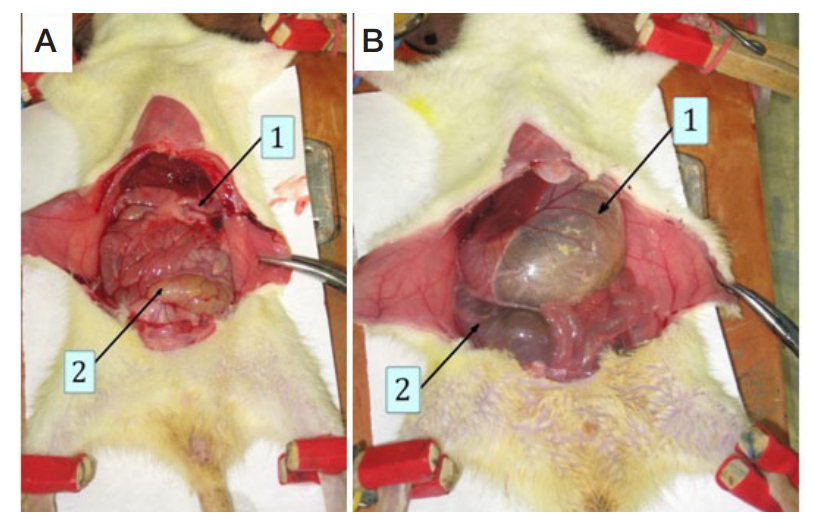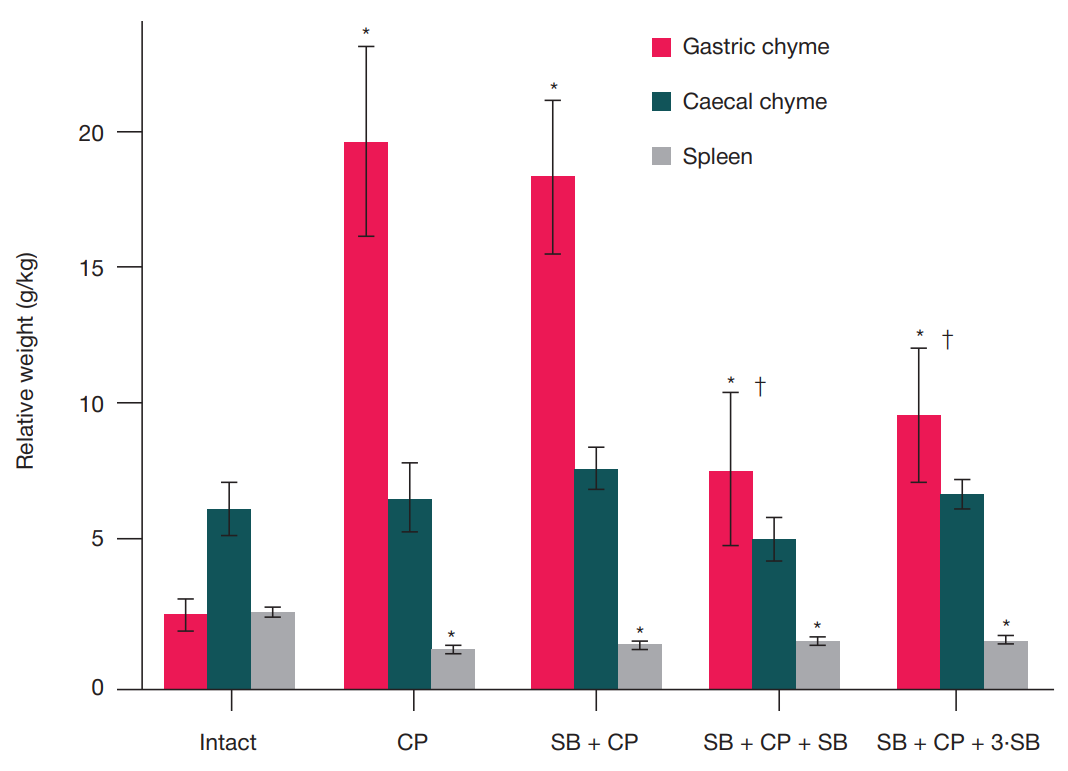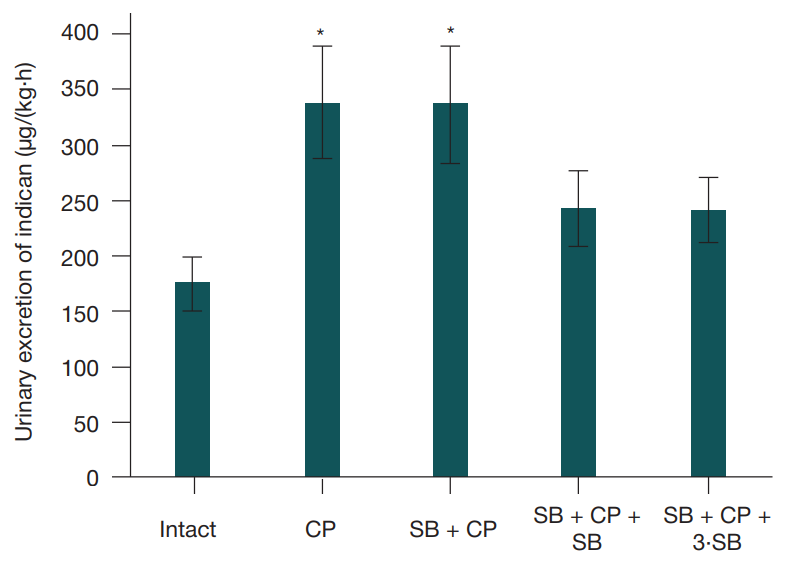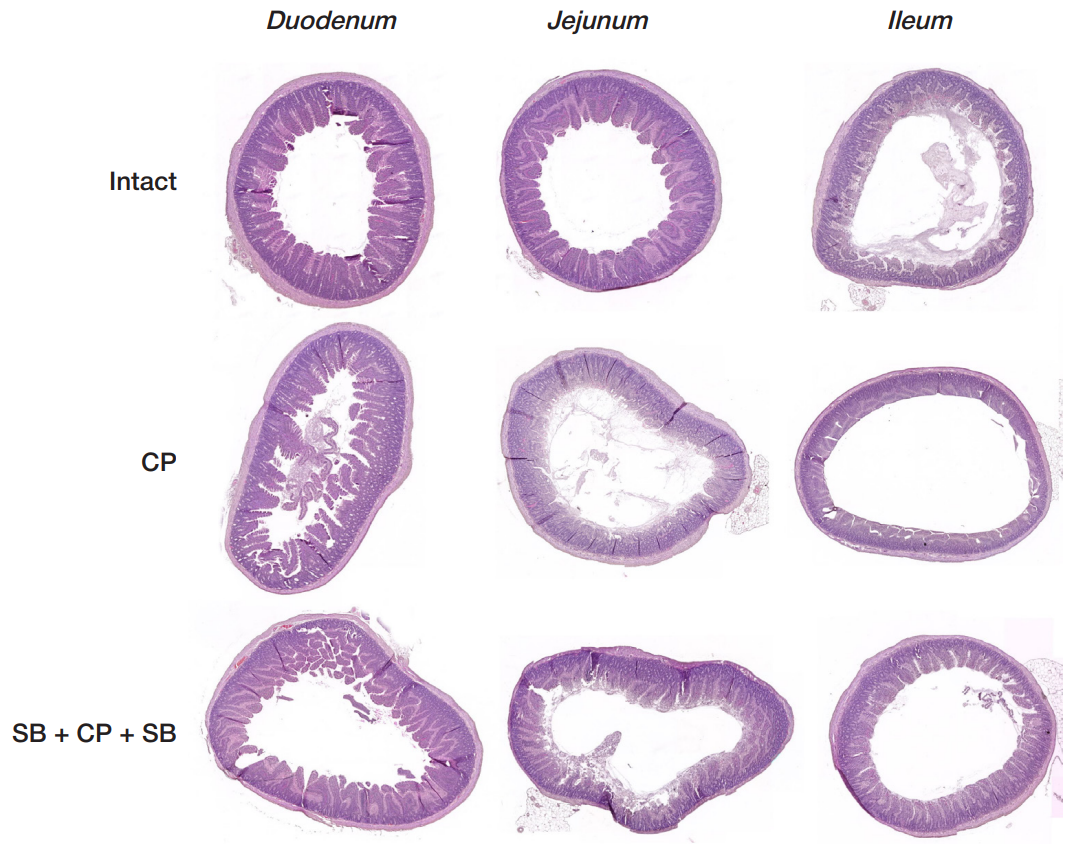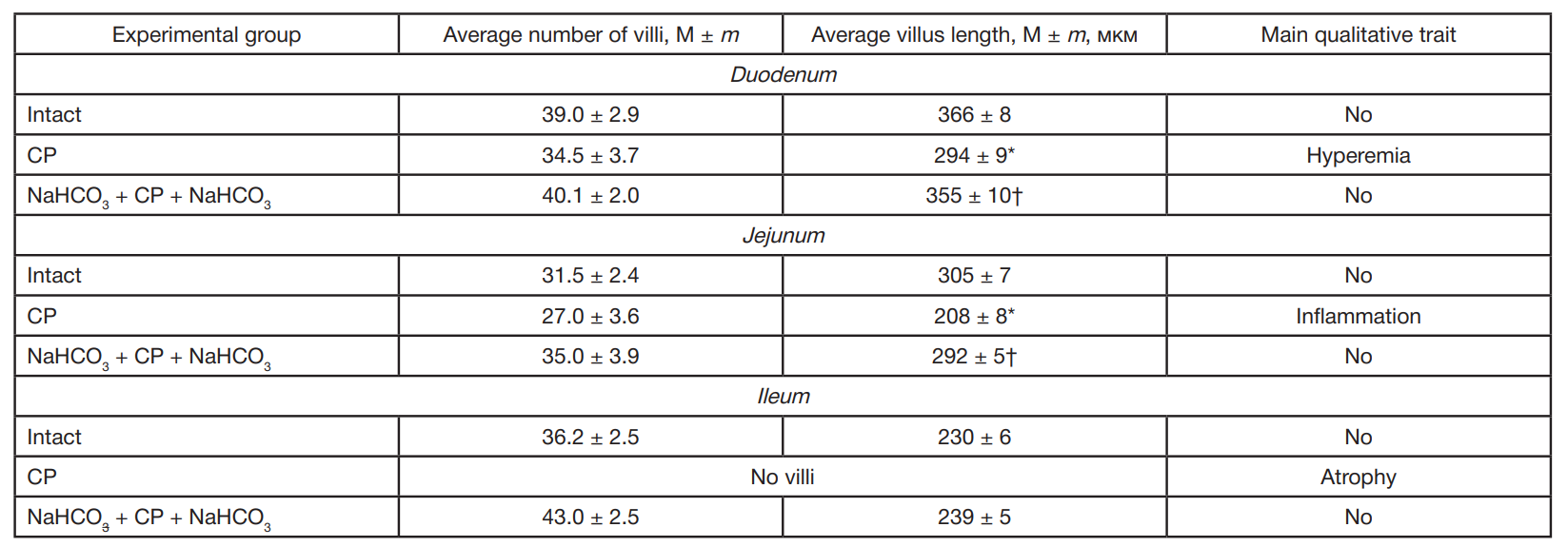
This article is an open access article distributed under the terms and conditions of the Creative Commons Attribution license (CC BY).
ORIGINAL RESEARCH
Effect of sodium bicarbonate on the development of gastric stasis in the rat model of myeloablative chemotherapy with cyclophosphamide
1 Golikov Research Clinical Center of Toxicology of the Federal Medical and Biological Agency, Saint-Petersburg, Russia
2 State Scientific Research Test Institute of the Military Medicine of Defense Ministry of the Russian Federation, Saint-Petersburg, Russia
Correspondence should be addressed: Timur V. Schäfer
Lesoparkovaya, 4, Saint-Petersburg, 195043, Russia; ur.xednay@refahcs
Author contribution: Vakunenkova OA — experimental study; Ivnitsky JuJu — rationale, developing the experimental model, data interpretation and discussion; Gaykova ON — morphometry data interpretation; Kozlov AA — morphometry studies; Schäfer TV — experimental procedure, data processing and visualization, developing the experimental model. All authors contributed to discussion, manuscript writing and editing.
Compliance with ethical standards: the study was carried out in accordance with the principles of bioethics, approved by the European Convention for the Protection of Vertebrate Animals used for Experimental and Other Scientific Purposes.
